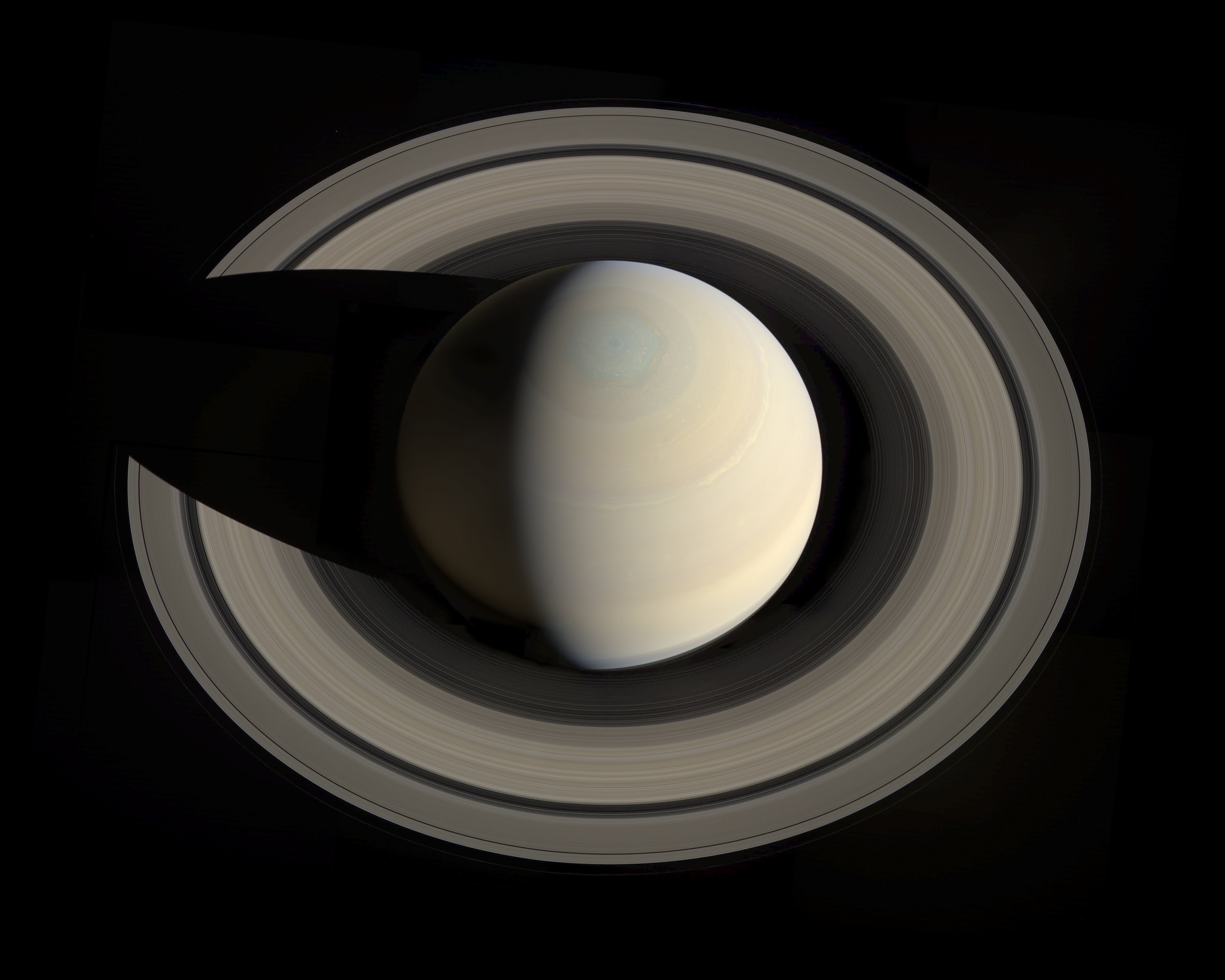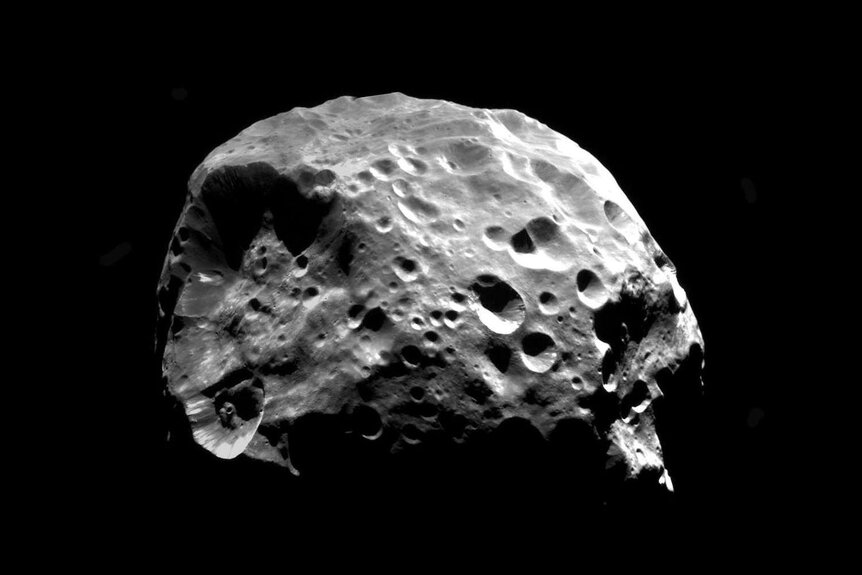Create a free profile to get unlimited access to exclusive videos, sweepstakes, and more!
How many moons does Saturn have? A lot more now: Dozens of new ones have just been found.
If someone asks you how many moons Saturn has, the correct answer is, "a lot."

If someone asks you how many moons Saturn has, the correct answer is, "a lot."
A somewhat more correct answer would be, "at least 82."
Probably the best answer would now be, "150, plus/minus 30, if you're talking bigger than 2.8 kilometers in diameter and only counting irregular ones."
Yeah, that's pretty specific. But that last bit is because new research indicates that's the likely number extrapolating from what's known about the population of Saturn's moons.
The question of how many moons a planet has comes up a lot, especially when astronomers find a passel of new ones around one planet or another... like when a dozen were announced around Jupiter, or 20 more around Saturn. But it also oversimplifies the situation; Saturn's rings are made of countless small chunks of water ice; so does it have trillions of moons? How small an object do you consider to be a moon?
And of course it elides over the case that these are known moons. And that's the problem for these planets: Finding those moons is tough. They're small, they're faint, they're next to a big bright planet, the planets move against the background stars from night to night (the word planet is Greek for "wanderer"), the moons move around the planet... this is hard.
There's also the problem of figuring out if the moving blip you see in your observation is something no one's ever seen before or truly a new discovery. For example, many of Saturn's faint moons were observed a while back, and their orbits weren't well enough determined to predict their exact positions very far into the future.
To solve both problems — to look more deeply to find fainter moons around Saturn, and finding "lost" or nearly lost previously observed moons — in the new work astronomers turned to the Canada-France-Hawaii Telescope, a 3.6 meter 'scope in Hawaii. Over the course of two nights they observed two large areas of the sky on either side of Saturn to look for faint moons.
And not just any faint moons, but irregular ones. This is a bit of a fuzzy definition, but regular moons are ones that orbit in the same direction Saturn spins (called prograde) and with an orbit that's tilted less than a few degrees to Saturn's equator. Most of the major moons are regular satellites, and probably formed along with Saturn, or were created when big regular satellites suffered impacts and the resulting debris coalesced into smaller moons.
Irregular ones orbit backwards — retrograde — and can have orbits tilted by quite a bit to the gas giant's equator. These are likely captured planetesimals (1 km or bigger chunks of material that formed out of the disk of material surrounding the Sun as the planets were forming), though it's not clear exactly how they were captured. They can't just fall into orbit around Saturn; they need some mechanism to slow down as they pass. They may have been caught in Saturn's gravity early on and slowed by material around the planet as it was still forming, for example. If the planetesimal was binary, then one could go into orbit around Saturn while the other was ejected (or collided with Saturn itself); the second one takes away enough energy for the first to be captured.
That's another reason the astronomers looked for these moons; the more we find, the better we can understand them.
They took dozens of short exposure images (to minimize smearing due to a moon's orbital motion), then did something clever to look for moons. They used a fixed reference (in this case, the first image taken) and then shifted the subsequent images by the amount an irregular tilted retrograde moon might move between exposures. Stars will get blurry or streaked, but any moons would get brighter in the images using such a method. They then looked for any possible moons this way by eye, literally having two astronomers on the team inspect each image visually — I've done something like this, and it's fun at first but gets tedious really fast, so kudos to them.
They then started again, shifting the images using a different value for orbital motion and tilt, then looked again. And again. And again.
When they were done they found 120 moving objects that fit their parameters, with 74 of them being pretty firm detections. They then checked these against known moons and found that out of the 42 expected to be seen by them, they found 34. The eight they didn't see were because they were too near the edge of the image, or were in images where the observing conditions weren't as clean. So they're confident they would've seen all known moons they could.
This still leaves several dozen new ones they found. They're not confirmed yet, so for now they're moon candidates. Still, extrapolating from how many they found down to how faint they could see, they think there are 150 irregular moons (±30) down to 2.8-km in size. That's three times as many as Jupiter probably has.
Discovering them is cool, but scientists want more. They want to know why they're there and what they're doing, and what this means for understanding the Saturn system.
Phoebe is Saturn's largest irregular moon*, roughly 200 km wide and 8 million km from Saturn. Some of the moons they found have orbits similar to Phoebe's, and so are likely remnants of past collisions with that moon.
But quite a few had orbits dissimilar enough from Phoebe that they are very unlikely to be associated with it. The astronomers think they may have formed when a smaller retrograde moon suffered a catastrophic collision, forming a lot of debris that became these moons. Given their size distribution — over time, further collisions grind down the moons to smaller sizes — they think this collision may have happened within the past few hundred million years. That's recent! Remember, the solar system is 4.6 billion years old.
And there's more. There's an immense but very faint and diffuse ring of material around Saturn called the Phoebe Ring, and it's likely caused by debris blown off the surface of its eponymous moon. However, it's too big: Impacts on Phoebe alone can't explain how some of the particles got so far from Phoebe. The new work indicates there are likely a lot more dinky moons with orbits similar to Phoebe's but farther out from Saturn, and impacts on them could contribute to the material in the ring.
What all of this shows us is that a) Saturn's moon system is complicated, and 2) there are a lot of moons out there, depending on what you call a moon. I myself don't fret over an exact number, since there isn't one, really! I'm more interested in how many above a given size there are, and how they orbit, and how they formed, and what they've done in the meantime to create and contribute to the wild and weird environment around Saturn.
That's way more important than a single number that's always going to change the harder we look at Saturn. Or at any given planet.
Don't sweat records. Focus on the big picture: Saturn is amazing.
*Assuming it's not actually an alien vehicle loaded with protomolecule.





























